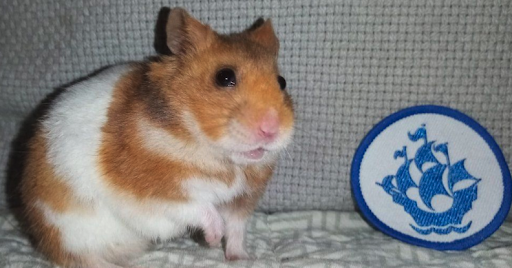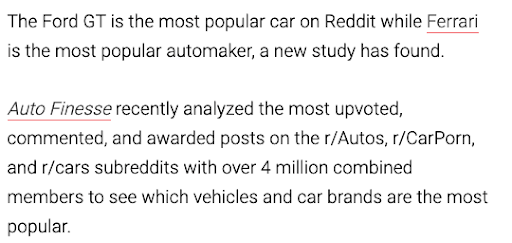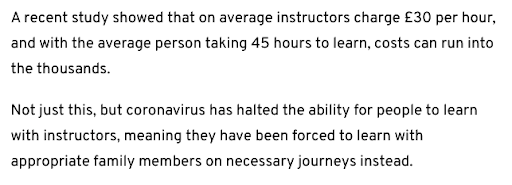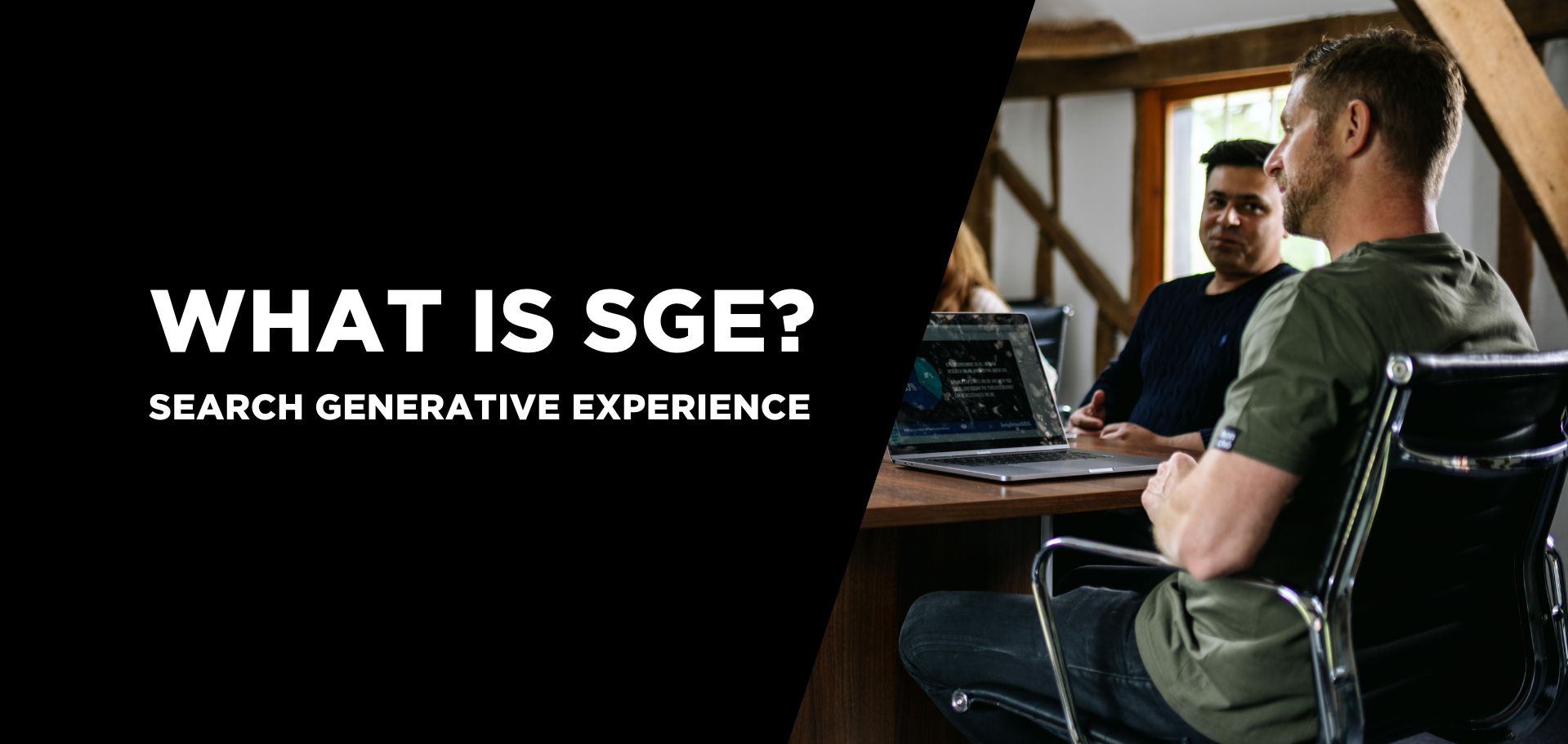2 min read
What is Google Search Generative Experience? (SGE)
What is Google SGE? Think of Google SGE as your helpful buddy on the search results page. Instead of making you click on different websites, it pulls...
This post is the second of a series on SLLAM (Subject, Lede, Links, Angles, Methodology), the outreach strategy used by Honcho’s Digital PR & Outreach team.
Guardian journalist Nicky Bandini described a lede as “the version of the story you would tell a friend if you ran to meet them at the top of a hill and only had one breath.”
So, with that in mind:
This article will talk about the best way to start an outreach email if you want to capture a journalist’s attention.
In the previous article, we talked about how getting opens are the most important part of the outreach process. Well, naturally, the second most important is keeping the openee interested. Which is where the first line, or lede, of the story comes in.
A lede (or lead) is a line (or lines) summarising the most important aspects of a pitch. If the subject line has got the journalist to look in the window, the lede gets them in the door.
Depending on which journalist course or expert you speak to, there are either three or upwards of 10 different types of lede.
Pointpark University provides a great list with examples, including the First-Person Lede:
“For many of us, Sept. 11, 2001 is one of those touchstone dates — we remember exactly where we were when we heard that the planes hit the World Trade Center and the Pentagon. I was in Afghanistan.”
The “Scene-setting Lede”:
Even at 48, Victor X, formerly known as Victor Ebubedike, is still in good shape. If you saw him out-and-about in London, dressed in the sharp suit and colourful bow tie synonymous with the Nation of Islam, there would be little doubt you were looking at a serious athlete; you just wouldn’t assume that the sport he played was American football.
And the straight to the point summary lede.
A hamster who “never fails to put a smile” on its owner’s face has been awarded a Blue Peter emblem.
The summary lede is what we’ll be focussing on today.
The above lede, and headline: “Blue Peter award given to Weston-super-Mare hamster”, perfectly summarises the story. Now, although only someone with a heart of stone wouldn’t read on to discover more, we don’t need to, the salient facts are clear for all to observe. As is the hamster himself:

Another thing to consider is the inclusion of the Five Ws and One H. Who, What, When, Where, Why and How. But, with campaigns, you don’t necessarily need the Where and When, because that is, by implication, Here and Now. So let’s focus on Who, What, Why and How, instead. Here’s an example from a recent pitch email:
Auto Finesse have turned to Reddit and analysed tens of thousands of the car communities’ most popular subreddits to discover which makes and models get the biggest reaction online. We have discovered that the Ferrari is the most popular brand and the Ford GT is the most popular car.
Who? Auto Finesse.
What? Ferrari is the most popular car make on Reddit
Why? See which makes get the biggest reaction online
How? Analysed a bunch of subreddits with a script
This lede was mirrored in the eventual coverage:

It doesn’t always have to be one sentence. We used a more extended lede recently to help set the scene a bit more:
Learning to drive is expensive. Studies show that on average instructors charge £30 per hour, and with the average person taking 45 hours to learn, costs can run into the thousands.
With this in mind Group 1 Automotive has analysed thousands of DVSA test routes from the 680 test centres in the UK to discover the roads that appear most frequently on test routes, and therefore the best, to plug into your SatNav and learn on in your own time.
Although admittedly wordy, it does its job and was followed up by further exposition on coronavirus and the length of time that instructors have been sidelined. So, I could have dropped the first line, if only because it targeted regional press in the UK, and they already know it’s expensive.
In fact, the first write-up from Bridlington Press omitted the first line and got straight to the point:

But other write-ups included the more casual lead-in:


Don’t feel tied to using the summary lede. I suggest it for two reasons:
Depending on the type of campaign that you’re pitching, it might be more appropriate to set the scene and zhuzh up the intro a bit more. Though, in my experience, being able to articulate your pitch in a single sentence is a good sign of the strength of your story.
Similarly, to retread a debate held at length last month in the Digital PR and journalist community. If you want to say ‘how are you?’, to a journalist, go for it. Don’t feel you need to jump straight into the story. It can be, with the right approach, a great way to start a relationship, and at a minimum, a polite way to interact regardless of the transactional element of the email.
My preference is to start with a lede, as is some journalists’.
And, crucially, I don’t think not asking how they are is a failure to build a relationship. I find it’s easier to build a relationship once a conversation has got going, and the fastest way to get a conversation going is to have them cover something that you pitched.
And, the fastest way to get that coverage? Get to the point and start with the story.
Keep your eyes peeled for the third post in this series, covering everything you need to know about Links in your campaigns. Looking for some effective Digital PR & Outreach campaigns for your business? Get in touch using the form below and find out how we can amplify your brand online.

2 min read
What is Google SGE? Think of Google SGE as your helpful buddy on the search results page. Instead of making you click on different websites, it pulls...

5 min read
Discover the power of high search volume keywords and how to effectively use them to boost your online presence and drive maximum impact.

2 min read
We're delighted to officially announce our partnership with Eflorist, one of the world’s leading flower delivery brands with over 54,000 local flower...
This post is the first of a series on SLLAM (Subject, Lede, Links, Angles, Methodology) the outreach strategy used by Honchō’s Digital PR and...
Honchō’s marketing experts live and breathe retail and automotive outreach. From large scale PR press releases to blogger relationships, our Digital...
If you want to make certain that your content has maximum impact; then this guide is for you. Honchō’s outreach team took an inventory of all of our...